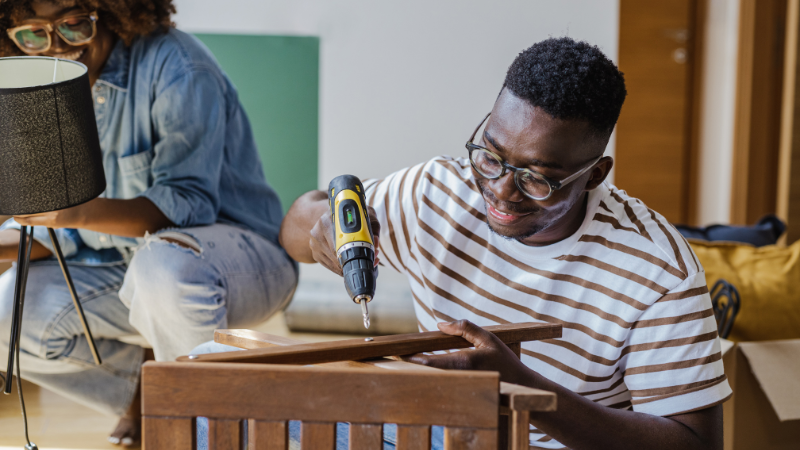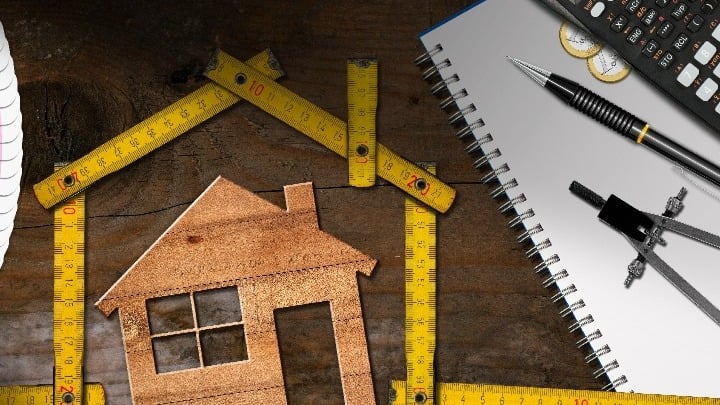Tips for Planning Home Improvement Projects in the New Year
The start of a new year provides an opportunity to pause, reflect on the past, and plan for the future. This month, take some time to outline your...
4 min read
 Twin Cities Habitat for Humanity
:
9:00 AM on February 16, 2025
Twin Cities Habitat for Humanity
:
9:00 AM on February 16, 2025

Congratulations–you’re about to be a homeowner! While this milestone brings excitement and pride, it also comes with a unique set of challenges that can catch even the most prepared homeowners off guard.
Your first year in your new home brings both predictable and surprising elements–this month-by-month timeline helps you prepare.
The weeks leading up to your move may seem like forever. But they are crucial for a smooth transition into homeownership. While you're picking out paint colors and testing furniture, complete these tasks to save stress (and money) in the long run:

To stay organized, keep your important documents in a folder while going through the process. If you have questions on any of these preparations, your real estate agent can be a great resource! If you’re a Twin Cities Habitat homeowner, you can also connect with our Homeowner Engagement team for advice.
Your first month in your new home sets the foundation for years to come. Start with these critical security and safety measures:
Remember your folder? Add important contact numbers, appliance manuals and warranties, and a home inspection report.
It’s completely normal if you encounter some surprises–that’s the joy (and reality) of homeownership! These might include mysterious light switches, hidden cleaning needs, and appliances with unexpected quirks. Document these as you go, and remember: unusual features or noises are just helping you get to know your home better.
 Over these next couple months, you’ll start understanding your home’s personality. This is the time to tackle repairs noted in your inspection report and start tracking monthly utility costs to establish a baseline for your budget. Pay attention to how your home behaves–that noise in the basement could be as simple as expanding pipes or as complex as a plumbing issue needing attention.
Over these next couple months, you’ll start understanding your home’s personality. This is the time to tackle repairs noted in your inspection report and start tracking monthly utility costs to establish a baseline for your budget. Pay attention to how your home behaves–that noise in the basement could be as simple as expanding pipes or as complex as a plumbing issue needing attention.
This is also a great time to meet your neighbors and explore your new community. Not only is it fun to socialize, but long-time residents often have valuable insights about local service providers and seasonal challenges.
Every discovery, big or small, helps you become a more confident homeowner!
After your first few months as a homeowner, you're ready to establish some routines to keep your home running smoothly. And that can look something like this:
After several months of bills, you've got a clearer picture of true homeownership costs. Take some time to go through your monthly utility bills and add up your maintenance costs.
Now for the fun part–planning home projects! Think of your home improvements in three categories:
 These months represent your first major seasonal transition as a homeowner. Whether you’re preparing for summer's heat or winter's chill, this is a good time to focus on your home's energy efficiency. The utility bills from previous months? They're your guide to understanding where your home might need extra attention–from adding insulation to sealing sneaky drafts around windows and doors.
These months represent your first major seasonal transition as a homeowner. Whether you’re preparing for summer's heat or winter's chill, this is a good time to focus on your home's energy efficiency. The utility bills from previous months? They're your guide to understanding where your home might need extra attention–from adding insulation to sealing sneaky drafts around windows and doors.
As a new homeowner, you might not think about caulking and seals around windows and doors. But these seemingly minor spots can be your best defense against unwanted water damage and help with temperature control.
It’s also important to strengthen relationships with contractors you trust. As you tackle seasonal tasks or unexpected repairs, keep a list of reliable professionals who show up when promised and communicate clearly.
Continue balancing your "must-fix-now" list with your "would-love-to-have" dreams, adjusting your budget and timeline as you learn more about your home's true needs.
As you approach your one-year in your home, take a moment to celebrate. You've come a long way from those first days with the keys, and now it's time to plan for year two.
Use this experience to create a strategic plan for your second year:
You’ve discovered your home's quirks, understood its seasonal patterns, and built relationships with trusted service providers. The first year of homeownership has given you a solid foundation of knowledge that will help you in the years to come.
And remember, every home has its surprises, but that's what makes it yours.
Your gift unlocks bright futures! Donate now to create, preserve, and promote affordable homeownership in the Twin Cities.

The start of a new year provides an opportunity to pause, reflect on the past, and plan for the future. This month, take some time to outline your...

When you settle into your new home after closing day, a whole new journey begins. You’ll have the chance to turn your property into a true home....

Congratulations, you’re a homeowner! You paid your down payment, signed on the dotted lines, and are now holding the keys to your very own home. But...